Straw Bale House Pros And Cons – Everything You Need To Know

Humans are endlessly innovative and industrious. It is truly amazing to see how people around the world have adapted to their environment and overcome the myriad challenges that come with creating shelter.
From the igloos of the Inuits to the Adobe Pueblos of the Native Americans of the American Southwest it seems that man will always find a way to thrive.
The modern world has presented us with a unique set of challenges. Instead of extreme cold and oppressive heat, we are finding that housing is a challenge because it is so expensive.
With home prices rising at unheard of rates, it’s no wonder that so many people are turning to alternative housing solutions.
In addition to the rising costs of housing, people have also had to come face to face with the impact we are having on the climate and our environment. The climate is changing rapidly and more and more people are looking for ways to offset these changes.
This is where straw bale homes come into play. If you have never heard of a straw bale house before, read on to learn about it. If you have heard of it before and want more insight, the following article will satisfy all your curiosities.
Straw Homes: Past and Present
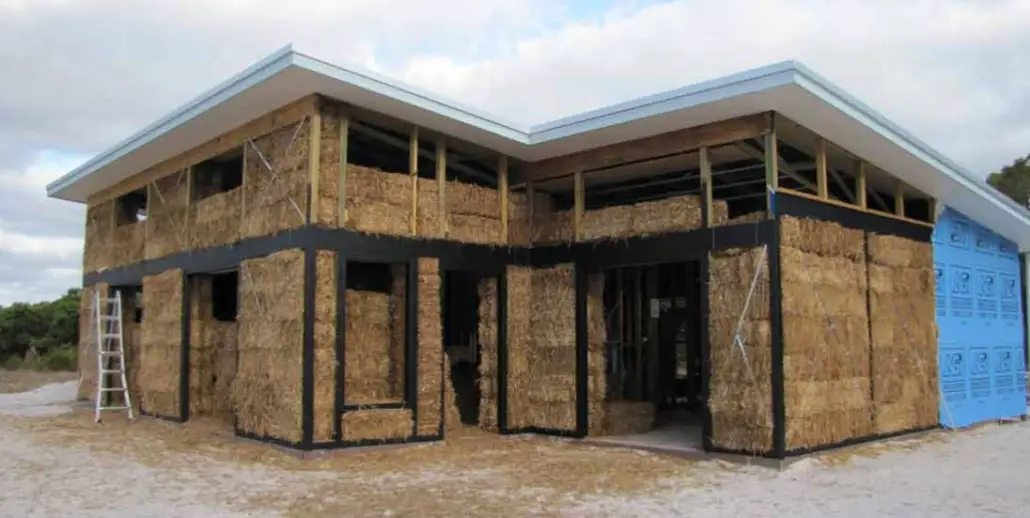
Even though you may just be hearing about straw bale homes for the first time; they are nothing new.
In fact, there is evidence that this type of construction was used in Africa in the Paleolithic era. In a broad sense, this means that straw bale home construction is almost as old as humankind.
While ancient people have used straw bales as construction materials for millennia, it is only in recent history that people began to keep records of it.
Flash forward to the United States in the 1800’s and we have record of one of the first instances of straw bale construction.
Straw bales were used to build a schoolhouse in either 1896 or 1897. It lasted for at least five years until it was reportedly eaten by cows. Even before then, there are also records of people in Asia thatching their roofs with straw.
Still, even though straw bale construction was a viable option for people in ancient times, does that really mean it is a viable option today?
We’ll let the records answer that question. In 1990 straw bale construction was recognized by some regional building codes.
In 2015, straw bale construction took another giant leap forward by being included in to the International Residential Code.
This means, among other things, that straw bale is recognized (to a certain degree) as an acceptable building material for single or two-family homes in 49 US states.
If the people who know housing the best recognize straw construction as a viable option then chances are it really is.
Today, straw bale construction provides an affordable and Eco-friendly alternative to housing.
It fills a very important need for people to know that they are not damaging the environment while at the same time, providing an affordable place for themselves and their families to live.
What is a Straw Bale Home & How is One Made?
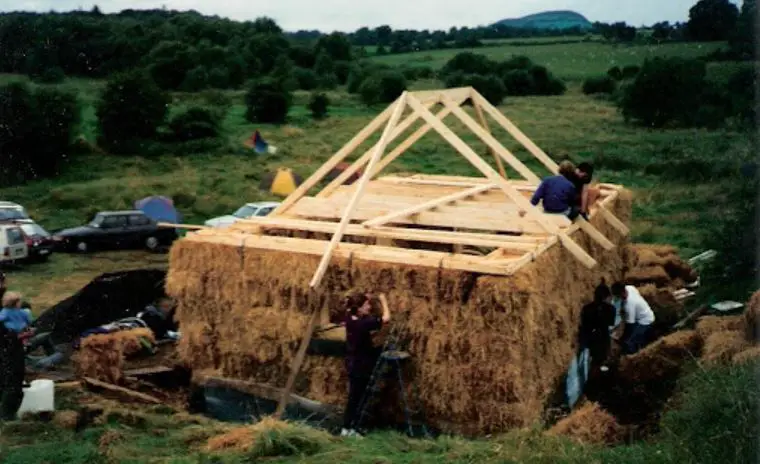
A straw bale house is exactly what it sounds like: a home built out of straw bales. The straw bales are used more or less like bricks.
They can be stacked on top of one another in order to form walls. The bales can be whole or incomplete depending on the needs of the structure.
There are three basic types of straw bale construction:
Nebraska-Style Straw Homes
Nebraska style straw homes utilize straw bales like bricks.
They are stacked in order to form walls without outer or inner supports.
Post and Beam Straw Homes
Post and bean style straw bale homes use the straw bales mostly for insulation.
A frame is constructed from wood (much like a regular house) and is filled with the bales for insulation.
Hybrid Straw Homes
Hybrid style straw homes incorporate design elements from both Nebraska style straw bale construction and post and beam style straw bale construction.
Straw bale homes can be covered with stucco in order to better protect the organic straw material. Straw bale homes can be built DIY style but there are a number of contractors around the country that specialize in this type of construction.
Advantages of Straw Bale Homes
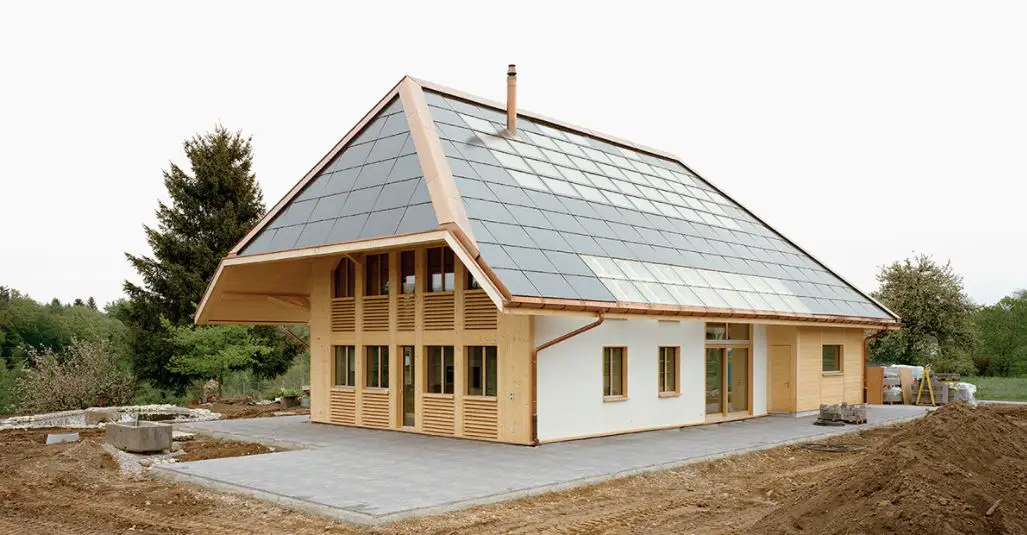
#1 – Straw Bale Homes Provide Good Insulation
Straw bales are thick and they are packed densely. This is a recipe for very good insulation.
Indeed, straw bale homes are known to be very well insulated. They stay cool in the hot summer months and retain a good amount of heat in the winter months.
In fact, as long as the straw remains dry, straw bale homes can be 20% more energy-efficient than traditional stick built homes.
#2 – Straw Bale Homes Are Affordable
As you can probably imagine, straw isn’t very expensive. Straw comes from edible grains.
The grains themselves are valuable as food but the stock of the grains is considered waste material. The stock of these grains is what we call straw.
Despite the recent rise in the cost of straw bales, the average price still hovers somewhere around $4.60 per small bale.
That’s a paltry price when you compare it to the average cost of traditional building materials like milled wood and sheet rock.
#3 – Straw Bale Homes Can Be Easily Built
The construction principles behind straw bale homes are pretty basic.
In fact, under the supervision of a contractor who specializes in straw bale home construction, you can ostensibly build one yourself. The process of building a straw bale home is relatively simple to learn.
This also means that homeowners can save money on the construction. It also means that you probably won’t have to wait around for many months before your straw bale home is complete.
#4 – Straw Bales Are Readily Available
One of the things that drive up stick built home construction is geographic location.
In some parts of the country, building materials cost more because they have to be shipped from further away. The cost of shipping can significantly drive up the cost of building a home.
That’s not something you have to worry about with straw bale homes because straw bales are readily available virtually anywhere in the US.
#5 – You Can Get The Family Involved
Building your own straw bale home with your family is a safe and very rewarding experience.
Since straw bales are lighter and much less rigid than wood and other building materials, the whole family can safely join in parts of the construction.
#6 – Straw Bale Homes Are Unique
Many people are drawn to straw bale homes because they stand out among traditional stick built homes.
Whether you have a quirky aesthetic or simply want to differentiate yourself from the crowd, straw bale homes offer a unique solution.
#7 – Straw Bale Homes are Pest-Resistant
Straw offers little nutritional value for pests like termites.
Whereas houses built from wood are a goldmine for termites and other kinds of pests, straw bale homeowners rarely have to deal with pest problems.
#8 – Minimal Ecological Impact
Creating straw bales does not have the same impact that creating building materials and tools does.
The only energy needed to create straw bales is sunlight and a little elbow grease from harvesting the stalks and bailing them.
On the other hand, stick construction materials contribute to deforestation.
The manufacturing process that goes into making power tools also contributes to air and water pollution.
#9 – Straw Homes Are Healthy
Traditional construction materials often contain contaminants.
Wood is often treated with chemicals to provide a higher degree of rot and pest infestation protection. Fiberglass insulation can also cause respiratory issues, rashes, upset stomach and other health problems.
Straw bales do not present these types of health hazards. They are made from organic materials and do not need to be treated with harsh chemicals to be resistant to rot or pest infestations.
#10 – Straw Bale Homes Are Good For The Environment
Lumber trees can take decades to regrow but straw is very renewable and grows very quickly.
It is an agricultural by-product so it also minimizes waste. There is no toxic manufacturing involved with creating straw bales either.
On top of all that, straw is biodegradable. While a straw bale house can last virtually as long as you need it to with the proper maintenance, when the building does need to be torn down, the straw biodegrades without harming the soil.
Disadvantages Of Straw Bale Homes
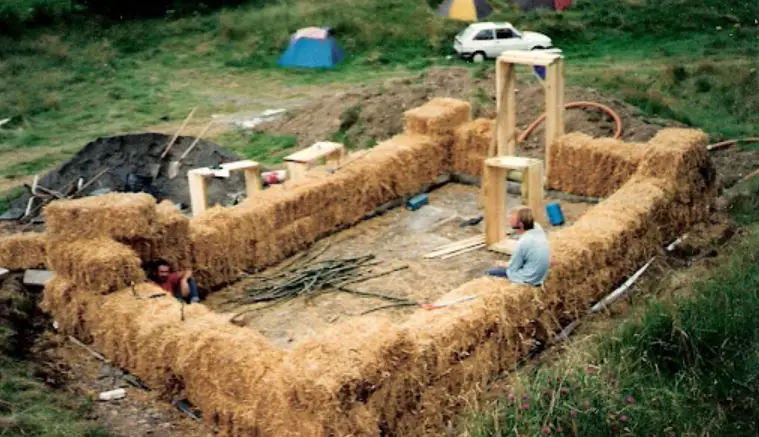
#1 – It May Require Expertise
Since straw bale home construction isn’t exactly mainstream yet, you may have some trouble finding a contractor who can handle the work for you.
#2 – They May Take Up A Lot Of Room
Depending on how much land you have to work with, straw bale homes can take up a lot of square footage.
That’s because the bales are typically between 18 and 20 inches thick.
If you have a small plot of land, the walls of your straw bale house alone can take up a lot of space.
#3 – They Don’t Perform Well In Wet Climates
Straw bale homes are better-suited to dry climates. That’s because straw is susceptible to excess moisture.
Too much rain or moisture in the air could compromise the integrity of the bales which is bad news for the entire structure.
#4 – They’re Prone To Structural Movement
Since straw bales are much more malleable that traditional building materials, structural movement becomes more of an issue.
The expansion of the soil underneath the straw bale structure can cause it to shift too much.
#5 – Difficulty Hanging Things
One of the most stark differences between straw bale homes and stick built homes is that a straw bale house may lack studs.
The framing may be able to support hanging decorations but depending on the type of straw bale home you have built you may not be able to hang anything on the inside or outside.
Is It Possible To Build Your Own Straw Bale Home?
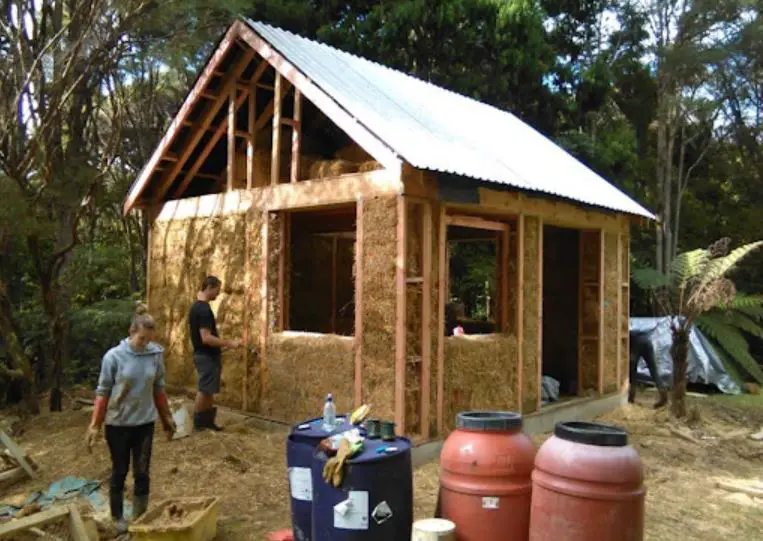
In theory, yes. The concept behind straw bale home construction is relatively basic.
In fact, with a bit of training you may be ready to build your own.
In most cases though, you will at least need the supervision of someone who has expertise in building straw bale homes.
How Much Would It Cost?
The price can vary greatly depending on the size of the house, where you are building it, the features you want it to have, whether you are building it yourself or hiring a contractor and other factors.
You can expect to pay anywhere from $88,000 to $200,000.
How Long Would It Take?
The actual construction time can vary but once the project gets underway it generally takes between 4 and 10 months, depending on the machinery and manpower involved, of course.
What Kind Of Foundation, Frame & Roof Should You Use On A Straw Bale House?
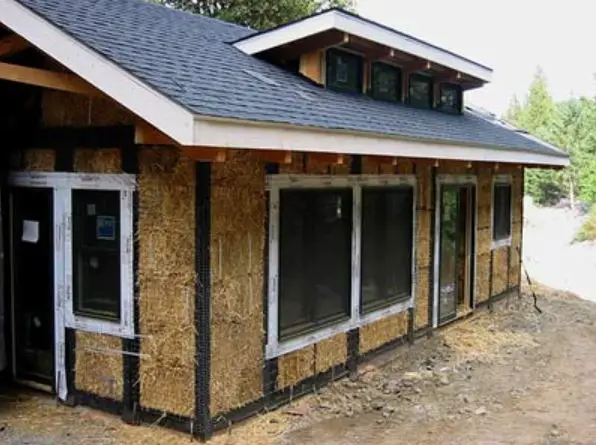
Straw bale homes can be built with traditional timber framing.
People have also used a variety of foundation materials including earth bags.
Gable roofs are the most common types of straw bale house roofs.
How Long do Straw Bale Homes last?
With the proper maintenance and upkeep straw bale homes can last as long as 100 years.
Where Are They Usually Found?
Straw bale homes still aren’t hugely popular but can be found all over the world including the United States, Canada, Mexico, Asia, Europe and Africa.
Straw Bale Home FAQ’s

Are Straw Bale houses Mortgageable?
While it is certainly possible to mortgage your straw bale home the rules and regulations may be murky in certain parts of the country where precedent for this type of housing is scarce.
Is A Straw Bale House Waterproof?
If the straw bales have not been treated or covered with stucco then they are very susceptible to moisture damage.
While straw bales can be weatherproofed to a certain degree they are not inherently waterproof.
What Happens When A Straw Bale House Gets Wet?
If there is not proper structural protection against rain (large overhanging eaves, proper roofing, plastering etc.) straw bale homes can harbor mold.
This will cause the straw to decay over time and threaten the structural integrity of the house.
Do They Rot?
If not properly treated and protected from rain and humidity, the straw can break down and rot.
Can You Make It More Waterproof?
Yes there are ways of waterproofing straw bale homes. The straw bales themselves can be treated to withstand moisture saturation.
You can also construct overhanging eaves to help channel rainfall away from the straw walls. Stucco plastering is also a common practice to help protect the vulnerable straw.
How Warm Are Straw Bale Homes?
Straw bales are very thick and can absorb a lot of sunlight that can be used to provide heat for the home.
What Climate Do They Suit?
Straw bale homes are definitely more suited to drier climates.
There are some moisture concerns when it comes to straw bales. Excess moisture retention can cause mold growth and begin to rot the straw fibers.
High winds are also another concern for straw bale homes. The best place for a straw bale home is somewhere with a dry, calm climate.
Do You Need Planning Permission For A Straw Bale House?
In most cases, yes you will need planning permission to build a straw bale house.
Temporary structures or structures that won’t be inhabited full-time may be exempt from permissions depending on the specific region.
How Much Does It Cost To Build A Straw Bale House?
The price can vary depending on size, features and other factors.
In general though, you can expect to pay anywhere from $88,000 to $200,000 to have a contractor build your straw bale home.
Do Straw Bale Homes Attract Mice?
Some types of untreated straw do make for attractive nesting places for rodents.
What About Snakes And Bugs?
Straw bales can also attract snakes looking for a nest but proper plastering will negate this danger.
What States Allow Straw Bale Houses?
Almost every state will allow at least page 4 permits that allow for experimental or alternative types of construction projects.
States like Arizona, California, Colorado, Nebraska, New Mexico, Nevada, Oregon, and Texas make it legal.
Final Thoughts

Straw bale homes are a good option – if you do them right.
That is a big caveat though because, as you already know if you’ve read this far, there are a lot of things that can go wrong with them.
They can attract rodents, are susceptible to rot and don’t do well in windy conditions.
Still, there is a lot of upside like affordability and flexible construction.
In short, there is a reason that despite all the modern construction innovations, straw bale homes are still being built to this very day.
You just have to carefully weigh the pros and cons before you decide to build one


